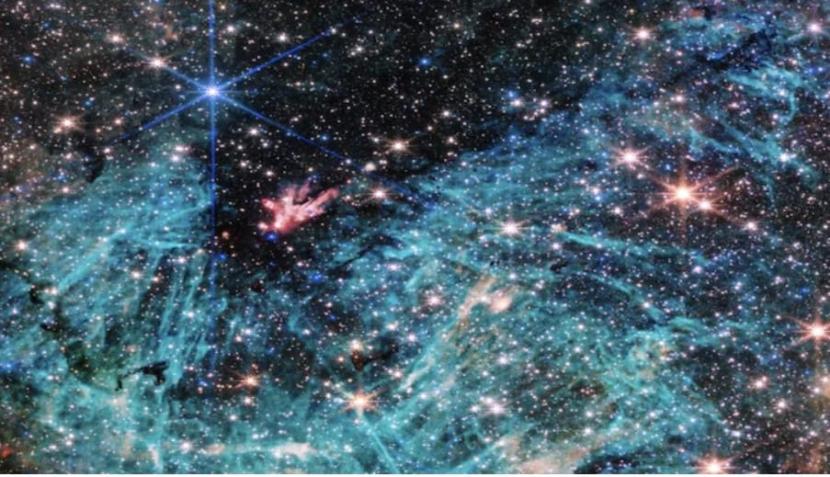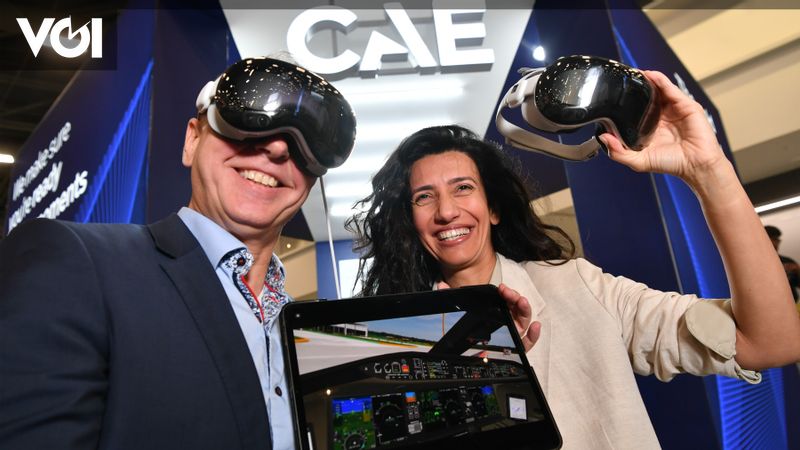REPUBLIKA.CO.ID, JAKARTA — James Space Telescope Webb revealed incredible sights never seen before. By combining advanced infrared technology, this telescope captured intimate details of Sagittarius C (Sgr C), the central part of the Milky Way where stars form at astonishing speed.
Using its infrared wavelength, Webb was able to penetrate the thick clouds of cosmic gas that previously posed an obstacle to other telescopes. In the images obtained by the NIRCam (Near-Infrared Camera) instrument, scientists did not only examine stars. They discovered the existence of half a million bright stars in the Sgr C region, with several characteristics that are still mysterious.
Reported Crushable SEA One of the main highlights on Thursday (11/22/2023) was the protostar cluster visible in the center left of the image, showing a group of stars in the growing phase. Within this cluster is a massive protostar that has attracted the attention of researchers. However, the surrounding high density makes it difficult for light from other stars to reach the Webb telescope, making this area appear less crowded even though it is actually one of the densest regions in the picture.
In addition, a large region of cyan-colored gas, covering an area of about 25 light years, is also being researched. NASA calls this hydrogen gas with an inhomogeneous structure. This presents a challenge for researchers who need to study the factors that lead to the formation of gas clouds of this size.
However, it should be noted that important features such as the supermassive black hole at the heart of the Milky Way are not shown in this image. This black hole, known as Sagittarius A*, has a mass about four million times that of the Sun and is the central point of galaxy We.
The Webb Telescope, a collaboration between NASA, ESA and the Canadian Space Agency, has revolutionized our understanding of the universe. With his giant mirrors and extraordinary infrared capabilities, Webb opened a new window allowing astronomers to peer into the past of the cosmos, examining stars and galaxies that formed billions of years ago.
Additionally, special equipment carried by Webb, such as a spectrograph, allows us to identify molecules present in the atmosphere of Milky Way exoplanets. This allows researchers to explore planets far beyond our solar system, opening up potential for discoveries never before imagined.
With the success of observing chemical reactions on planets 700 light years away and the first observations of Earth-sized rocky planets in the TRAPPIST system, the Webb telescope promises to continue to reveal the secrets of a universe that conceals beauty and unsolved mysteries.
The Indonesian U-17 World Cup will take place from November 10 to December 2, 2023. Buy and immediately get official tickets for the U-17 World Cup matches in Jakarta, Bandung, Solo and Surabaya.
on the page https://www.tickets-u17worldcup.com/matches

“Travel nerd. Social media evangelist. Zombie junkie. Total creator. Avid webaholic. Friend of animals everywhere. Future teen idol.”


:strip_icc():format(jpeg)/kly-media-production/medias/3387188/original/007486800_1614303448-banner__1_.jpg)



